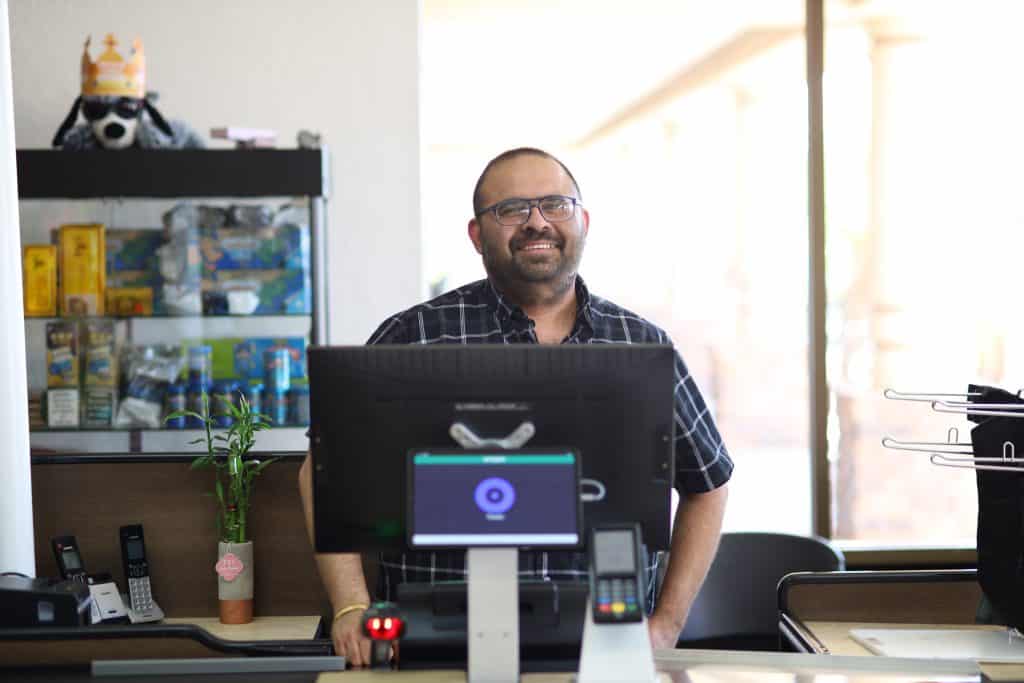Starting an online thrift store can be a rewarding venture that can generate a steady income for you. People love good quality products that have been gently used and are willing to pay for them.
Starting an online thrift store allows you to tap into that market and make money from selling these items. So if you are planning to start your thrift store, in this article, we will provide you with the steps to do so.
Table Of Content
What is a Thrift Store?
Pros and cons of opening a thrift store
How to Start an Online Thrift Store in 9 Steps?
Conclusion
What is a Thrift Store?
Before we jump into the process of starting your thrift store, it is important to understand what a thrift store is. A thrift store is typically a retail establishment that sells pre-owned used items such as clothing, furniture, and housewares at discounted prices.
These stores are often used by people who need to save money or are looking for a bargain. The items sold at thrift stores can range from gently used to almost new and may include vintage, antique, and modern products.
Compared with a grocery business, a thrift store is more focused on gently used items for sale. A grocery business deals mainly with food and household items rather than used or recycled goods.
So in simple words, a thrift is a type of retail store that specializes in selling used items at discounted prices. People can buy these items at a fraction of the cost of buying them brand new.
Thrift stores mainly focus on selling second-hand clothing but can also offer furniture, books, and other items at discounted prices. Starting a thrift store can be a rewarding business as long as you follow the fundamentals of operating a retail business.

Pros and cons of opening a thrift store
Unfortunately, just like any business, there are some pros and cons associated with opening a thrift store. It’s very important to know the pros and cons of a business before investing in it.
Pros
Online and offline business opportunities:
So the first and one of the biggest advantages of opening a thrift store is that you can sell both online and offline. This allows you to reach a wider audience and maximize your business potential. People can also check your store before coming in to shop, which is a huge benefit.
High demand:
Thrift stores are in high demand as people are always looking for good quality items at discounted prices. This allows you to tap into the market and make money from selling these items. This becomes even more profitable when you have unique items that are hard to find. For example unique clothing, shoes, etc…
Low overhead:
Another huge advantage of starting a thrift store is that the cost of opening and operating it is relatively low when compared to other businesses. You don’t need a big space or expensive equipment to start as most of the items are used and can be found cheaply in second-hand stores
Fast-growing market:
The thrift industry is rapidly growing and this provides you with an opportunity to enter the market at the right time. This allows you to get customers quickly and grow your business fast. Try focusing on a target audience and providing them with unique items to increase your sales.
High-profit business model:
The thrift store business model is very profitable as you can sell items for a fraction of their original price but still make more money than if you had purchased them new. People would love to pay you good money if you provide them with quality items at a discount.
Higher chance of getting referrals:
People who shop at thrift stores are usually bargain hunters and they tend to spread the word about your store if they find great deals in it. This increased referral business can help to grow your store quickly and cost-effectively. You just have to make sure that you offer good deals and great customer service.

Cons
Time-consuming:
Opening and operating a thrift store can be time-consuming as you have to constantly look for new items, sort through them, price them correctly, and put them up for sale. This takes a lot of time and effort but can pay off in the long run if done properly. You will have to dedicate a lot of your time to make sure that the store runs smoothly.
High competition:
As the thrift store industry is growing, there will be a lot of competition. You need to make sure that you stand out from the rest and offer unique items to attract customers. This is why it’s important to focus on a target audience and differentiate yourself from your competitors.
Limited resources:
The thrift store industry is limited in the sense that there are only so many items available. This means that it can be hard to find unique items and this can limit your potential earnings. You need to know where you can find quality second-hand items and how much you should charge for them. There are also other scalable business ideas that you can try if you find it difficult to grow your store.

Streamline your business with Octopos– A Complete POS System with Big Boys Tools without the Big Price
It is a lot more than a point of sale. Octopos is easy and intuitive for you and your staff to use. Yet you get all these sophisticated tools to manage inventory, track and engage customers, get meaningful insights into your business, and much more.
How to Start an Online Thrift Store in 9 Steps?
So now that we know one or two things about the thrift store business, let’s look at how you can start your online thrift store in 10 steps.
But before we jump into the steps, always remember that this is a business and should be treated like one. Make sure that you have a plan in place, research the market, and focus on providing quality customer service to ensure your success.
1. Choose a Niche
Selecting the right niche is crucial for any business so make sure that you do your due diligence. Evaluate which items are in demand and do the research to ensure that there is a profitable market for your items.
As we mentioned earlier, the competition can be a bit more fierce in the thrift store industry so you must differentiate yourself. But once you find success in that particular niche, you can spread your wings and try offering different items.
2. Manage the finances
Although the thrift store business model is relatively inexpensive when compared to traditional stores, you still need to manage your finances properly. Make sure that you keep detailed records and track all expenses such as rent, utilities, inventory, etc.
On average, it costs around $20,000 – $30,000 to open a thrift store but this can vary depending on the size and location of your store. Here are a few costs that you will need to consider:
- Rent
- Utilities
- Inventory
- Supplies and equipment
- Legal fees (license and permit)
3. Set up your business website
Setting up a website for your business is an essential step and you should consider it as soon as possible. This will allow customers to view items from outside their local area, increasing your reach.
Make sure that your website is mobile-friendly so potential customers can shop on the go. Also, invest in a good e-commerce platform to make it easy for customers to purchase items.
Hiring a professional web developer could be a good idea if you don’t have the technical skills to do it on your own.
4. Source your products
Once your store is up and running, you need to source products. You can find second-hand items through thrift shops, garage sales, auctions, and estate sales. If you want to expand your selection, consider partnering with wholesale suppliers or drop shipping companies.
You must take the time to check the quality of items before adding them to your inventory. This will ensure that customers are satisfied with their purchases and you don’t get any negative feedback.
Find a reliable supplier who can deliver items on time and has a good return policy. Stick with a few suppliers and form a good relationship with them. This way you can get the best deals and discounts.

5. Put pricing in place
Thrift stores are known for their affordable prices and customers expect to find good bargains. So you need to price your items accordingly. Keep a margin between the buying and selling price so you can make a profit while still offering competitive rates.
You should also consider discounting certain items to attract more customers and boost sales. Offering loyalty programs and other incentives can be a great way to reward customers and keep them coming back.
The goal is to maximize profits while still offering good value for money. Your pricing should also be competitive compared to other thrift stores in the area. You can visit other thrift stores to get an idea of what prices they are offering.
6. Invest in a POS system
If you are planning for an online and offline thrift store, a Point of Sale (POS) system is an essential tool for your business. It will help you manage your inventory, process payments, and keep track of sales figures.
There are a variety of POS systems available on the market and each one features different features and capabilities. Choose one that suits your needs and budget. Make sure that it integrates with other business software so you don’t have to manually enter data.
A good POS system will also help you save time and make it easier to manage your store’s operations. Investing in a good POS system will pay off in the long run and help you maximize profits. Try octopos pos system for your thrift store.
7. Hire some employees
Running a thrift store can be overwhelming and you will need some help. Hire employees who are friendly and knowledgeable about the items that you offer. You should also look for workers who have experience in retail or customer service.
Having reliable staff on hand to assist customers and manage inventory is essential for running a successful thrift store. Train your employees properly so they are aware of your policies and procedures.
Make sure that you provide a safe and comfortable working environment for your employees. This will ensure that they feel appreciated and motivated to do their best work.
Make sure to properly train them and provide clear instructions on how to handle customers and perform tasks.
8. Market your store
Once you have everything in place, it’s time to let people know about your thrift store. Investing in marketing and advertising is a great way to spread the word and attract new customers. You can use traditional techniques such as flyers, leaflets, and newspaper ads.
Social media platforms can also be used to promote your store. Consider creating a website or blog where customers can learn more about your store and its products.
You can also use email campaigns to communicate with customers and keep them up-to-date on special offers and discounts.
Organizing events and engaging in local community activities are also great ways to get your store noticed. When it comes to marketing, the more creative you are the better it will be for your store.
9. Track progress and adjust accordingly
And lastly, once you’ve got everything up and running, it’s important to monitor how your store is performing. This will help you identify areas where improvements can be made or adjustments can be made to increase profits.
Keep an eye on the sales figures, customer feedback, stock levels, etc., and use this data to make the necessary adjustments.
Conclusion
So there you have it! These are the essential steps to setting up and running a successful thrift store. It’s important to remember that each business is unique and there is no one-size-fits-all approach. However, by following these steps you will be well on your way to establishing an efficient, profitable, and customer-friendly thrift store.
How to Start a Dog Grooming Business
Reference:

